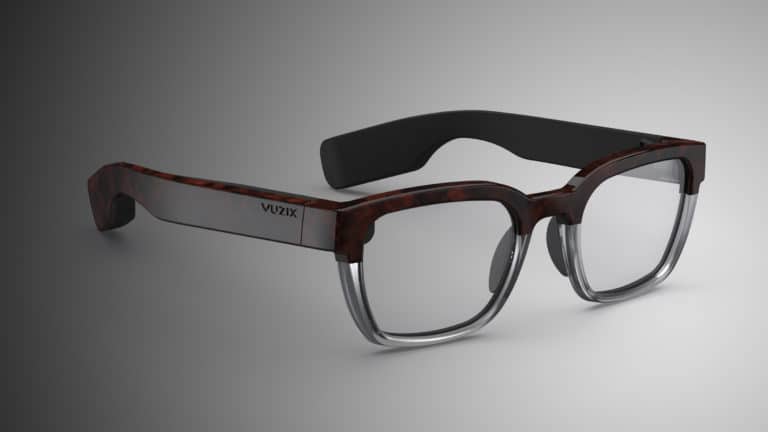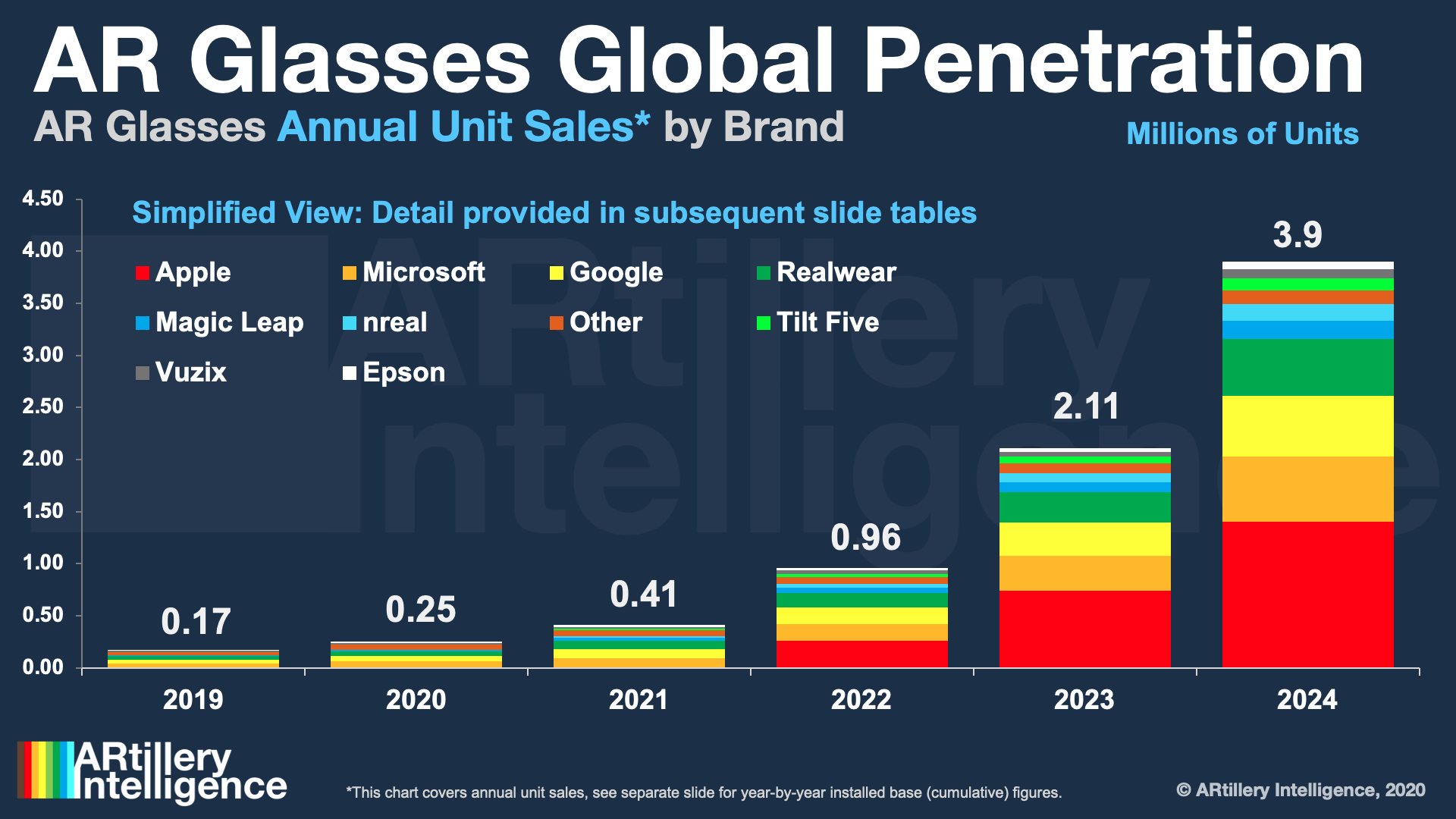
Though AR’s attention and scale mostly reside on the smartphone, its true endpoints are headworn. Interactive line-of-sight content delivered through smart glasses is the modality that will unlock AR’s native potential. This is the AR that everyone’s excited about.
But though that’s the vision, technical and practical barriers loom large. Realistic AR glasses ubiquity is still years away. So how will its progression unfold? This is the topic of the latest Artillery Intelligence report and episode of ARtillery Briefs (video and takeaways below).
By the Numbers
First, it’s worth noting that AR glasses have arrived meaningfully if we consider their deployment in the enterprise. AR glasses’ style crimes and wearability issues aren’t as prevalent in the workplace. That’s where sensibilities differ, and there’s a clearer business case.
That said, consumer markets will eventually eclipse enterprise adoption, based on population sizes and the typical arc of new technologies that start in the enterprise (PCs are a good example). But this transition will take years to unfold, for both technological and cultural reasons.
Putting some numbers behind that, ARtillery projects AR glasses revenue to grow from $822 million in 2019 to $13.4 billion in 2024. Enterprise spending represents 98 percent of that total, retracting to 90 percent by 2024. And the wild card to kick off that progression will be Apple.
Apple’s projected market entrance in the next few years will be impactful. But it’s worth cautioning that prospective Apple AR glasses will likely sell less than 5-million units in their first three years, which factors in historical growth curves for Apple products like iPhone and Watch.
To put things further into perspective, ARtillery Intelligence’s 2024 projected unit sales for consumer AR glasses will be about 1.6 million units (the rest going to enterprise). This is a good start but it’s a figure that’s dwarfed by the smartphone installed base by about 2000 to 1.

AR Lite
Beyond projected sales, what will Apple’s glasses be and do? Signals indicate they could defy – or at least broaden – connotations with AR. So instead of cartoon monsters, we’re talking lighter forms of augmentation such as vision correction or HDR digital filters that brighten your day.
One signal for this approach is that Apple’s size dictates a fiduciary drive to aim for massive markets. A corrective or enhanced-vision approach puts its glasses more in the sunglasses or prescription glasses realm, which are collectively hundreds of billions of dollar markets.
This “AR lite” approach, as we’re calling it, also fits the profile for Apple and its style sensibilities. The underlying technology isn’t to the point where sleekness and graphical intensity are possible in the same device. So given that choice, Apple could lean towards the former in V1.
To put that another way, Apple’s smart glasses will prioritize “wearability” right out of the gate, and will then evolve over time towards more graphical intensity….rather than starting with a magic-leap-style user experience that slims down over time. It’s a matter of design tradeoffs.
By doing this, Apple could kick off wearability as the new design target that everyone shoots for. In the smartphone’s evolution — from texting to summoning an Uber — the common thread was mobility. Smartglasses’ central point of value from day one could be wearability.
Resetting Expectations
Of course, all of the above easier said than done and there are sizeable design challenges and UX tradeoffs when shedding hardware bulk. The key components of AR glasses — the optical system and the display — will continue to be faced with hairy technical challenges.
Finally, it’s worth noting that these technical barriers deviate from generalist media that tends to paint a rosy picture of AR that focuses on futuristic concepts versus realistic implementations. Though it’s well-intentioned, it sets AR up to fail by setting overblown consumer expectations.
This means that a sort of “reset” could be in order for consumer viewpoints on realistic AR glasses that will arrive from Apple and others. If the AR industry can accomplish that, it will ensure more appreciation for the requisite steps and milestones in AR’s near-term evolutionary path.

